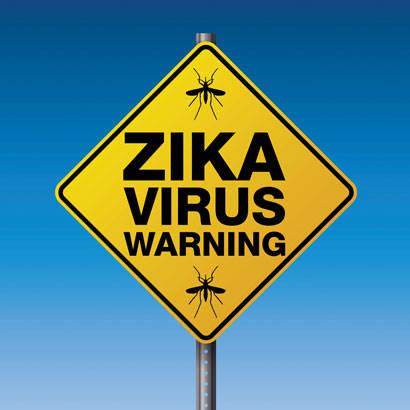
According to the Centers for Disease Control and Prevention (CDC), the Zika virus is now a nationally notifiable condition throughout the United States. Between January 1, 2015 and April 19, 2017, more than 5,000 cases of Zika were reported in the United States, and 223 of those cases were acquired through presumed local mosquito-borne transmissions in the states of Florida and Texas. As with any insect-related illness, the threat of the disease spreading at epidemic proportions has many Americans fearing for their communities and their families. In the Southern states, there is a particular fear of the disease spreading from Central and South American countries where diagnosed cases have so far been more prevalent.
Keep your citizens informed this summer about the threat of Zika in your community with an effective communication and education plan. By increasing communitywide understanding of the Zika virus, its sources, risks, symptoms and treatments, your citizens will be best prepared to help prevent its spread, mitigate the potential impact to themselves and their families, and actively help safeguard their community from the risk of widespread infection. Following is a recommended communication plan to help you get started:
Communication Foundational Principles
- Focus municipal communications specifically on the known threat in your community. Whether you are a county, city, village or township, any communications coming from your local government administration should be hyper-local. Your citizens want to hear the latest news from you as it pertains to your community.
- Ensure your communications leverage the latest, local, quantified data. Partner with local research resources to ensure your administration is constantly aware of any recent cases, or changes in local risk factors, so that such news can be communicated to citizens in a timely manner.
- Ensure all communications stress prevention techniques. The CDC offers in-depth prevention resources and guidance to inform your communications.
- Conduct a communication channels assessment to determine trusted mass media and social media outlets that you plan to use as part of your preventive communication strategy and in the event of an escalation in known cases in your area. Plan to leverage all appropriate communication channels, including your local government’s social media accounts and website, trusted members of your local media and a mass notification system if one is already in use by your emergency response personnel.
- Partner with local experts to assist with community education sessions, online content and informative handouts. Consider partnering with local physicians and epidemiologists to share insights relative to risk factors, trends and prevention methods. Also, partner with leaders of your local park and recreation department or public works department to address specific local concerns — such as areas of your community with standing water that could form breeding grounds for mosquitoes.
- Place a strong emphasis on educating women who are pregnant or who may become pregnant. Work closely with your local hospitals, clinics and OBGYNs to offer the educational support these women need to mitigate the heightened risks that Zika poses to pregnant women and their unborn children.
- Place signage reminding citizens to protect themselves from the threat of mosquito bites at public park and recreation areas.
- Emphasize educational efforts in areas of your community where women and other citizens may traditionally have poor access to health services, education and resources.
- Depending on the needs of your community, ensure all published communications are reproduced in multiple languages. This will help maximize the reach of your communication efforts and ensure the equitable access to safety information for all residents.
- Customize your communications for various demographics based on risks factors. For example, create separate communications and prevention education pieces for women, families, the elderly and community groups.
- Stimulate two-way dialogue with citizens. Education and regular communications are essential to a successful prevention strategy, but so is listening to feedback and concerns from citizens and ensuring they have an avenue to ask questions of their local government leaders.
- Strengthen your efforts by aligning with national partners, technical groups, professional networks and nationwide researchers. Such partnerships will not only provide you with access to the latest national and global data, recommendations and prevention techniques if an outbreak does occur in your community, but will also give you immediate access to national emergency response resources.
- Include in your communications a reminder that citizens who have traveled to Zika-impacted areas should avoid mosquito bites in your community during the first week upon return, even if they are not exhibiting symptoms.
Most importantly, be consistent with your communications, reminders and the availability of educational materials, not just during the summer months, but all year long. Remind citizen travelers to be vigilant about protecting themselves outside of the country for the safety of their families and neighbors when they return home. By incorporating Zika education into your already robust park and recreation safety communications, the risks and preventive measures associated with this virus will remain top of mind all year long — helping to minimize the risk in your community.
Landon Schenck is the General Manager of CivicRec.

